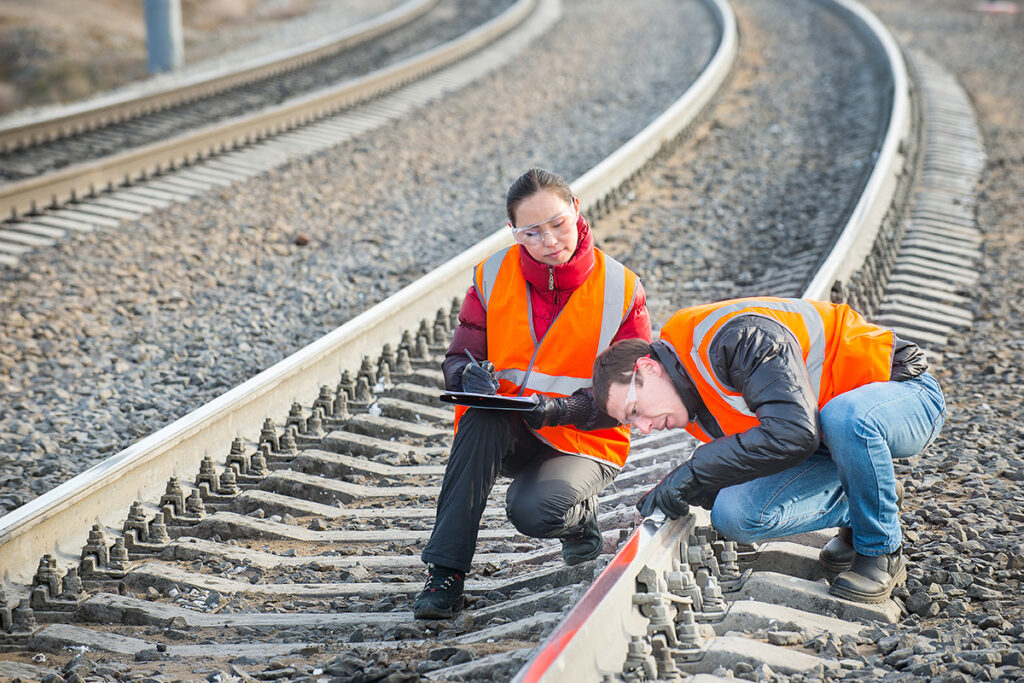The mobility and infrastructure (M+I) industries make up the essential foundation of our daily movements, from the sidewalks and trails under our feet to the public transportation and highways that guide our morning commutes. Driven by billions of dollars in federal investment, M+I workforce needs will grow even more acute as labor-intensive capital projects are undertaken across the country. In Austin, for example, developments like an extension of the city’s light-rail transit system and the expansion of I-35 are estimated to add about 100,000 jobs over the next decade, according to a 2023 report.[1]
While these construction efforts will bring immense economic opportunity, there are hurdles to attracting the requisite talent. First, the M+I industries are facing an impending wave of retirements known as the “silver tsunami.” For example, the American Trucking Association anticipates a shortage of 1.2 million truck drivers over the next decade due to retirements, creating a wide talent supply gap on top of new job growth.[2] Additionally, the M+I fields have significant gender inequality, with women making up just 15 percent of the workforce, fomented by workplace harassment and difficult labor conditions.[3] Finally, construction projects may geographically separate communities or disrupt disadvantaged residents’ housing and transportation, creating barriers to their participation in related employment opportunities.
Failing to address these factors may derail construction projects and transit rollouts, as well as perpetuate gender and racial inequality in the M+I industries. On the other hand, economic and workforce development stakeholders can leverage solutions to reach a broader talent pool. Of the success stories that have emerged, three geographies stand out: the Santa Clara Valley, California; Denver, Colorado; and Portland, Oregon. These workforce ecosystems have implemented the talent attraction, retention, and development efforts that, like construction scaffolding, will support the M+I talent pipeline as the foundation of workforce training programs are built.
Santa Clara Valley Transportation Authority (California)
Home to Silicon Valley and San Jose, the Santa Clara Valley is a hub of technological innovation and economic growth. In July 2024, the Valley Transportation Authority (VTA) began construction on a ten-year rapid-rail extension in the Bay Area that will require 75,000 construction workers on top of additional operations talent.[4] To strengthen the operations workforce, VTA will tap the first transit apprenticeship program in the nation, Joint Workforce Investment (JWI).
JWI was created in 2006 through a collaboration between VTA transit management, a local chapter of the Amalgamated Transit Union (ATU), and a local community college to train light-rail mechanic and operations apprentices and pair them with frontline peer mentors. JWI has vastly improved VTA’s employee retention rate and spurred California Transit Works!, an ATU initiative which the Department of Labor considers a highly effective program.[5] VTA also promotes itself as a good place to work for female transit professionals through the Women Innovating Transit group, which provides resources and advocates for improving frontline safety.[6]
Denver Regional Transportation District (Colorado)
In 2004, the Denver Regional Transportation District (RTD) launched FasTracks, the largest voter-approved transit expansion program in the country. With nearly 150 miles of light rail and bus rapid transit to be constructed, the project was anticipated to create more jobs in the electrical, welding, pipefitting, and other trades than existing workers in the Denver metro.[7] To meet these talent needs, RTD launched the Workforce Initiative Now (WIN) program in 2011, which assisted Denver residents in ZIP Codes containing FasTracks projects with career planning, training and job placement, and wraparound support. Through Federal Transit Administration grants, WIN scaled to place over 700 local workers in these careers, boasting a high student satisfaction rate and a retention rate above industry standards.[8]
Additionally, RTD runs a career week under the Transportation and Construction GIRL Initiative, a Colorado-based career exploration program for girls and women interested in pursuing a mobility occupation. Participants visit maintenance shops and transportation businesses, discuss careers with professionals, and try out the RTD light rail operation simulator. The RTD outreach specialist said that the impact of these job exposure experiences on participants is “like ‘The Wizard of Oz’ in lifting the curtain” on the reality of transportation careers.[9]
Oregon Department of Transportation
Portland’s Albina neighborhood was physically separated from the rest of the city by I-5’s construction in the mid-20th century. When the Oregon Legislature directed the Oregon Department of Transportation (ODOT) to address highway congestion in 2017, it recognized the opportunity to redress the historical inequities created by this separation through targeting construction job opportunities to disaffected residents. This includes tapping ODOT’s Highway Construction Workforce Development Program (HCWDP), which has provided pre-apprenticeship classes and wraparound services to women and people of color since 2010. A 2022 study of over 200 apprentices conducted by Portland State University found that childcare subsidies were one of the most impactful services, improving completion rates for students of all backgrounds.[10]
The study also found that jobsite harassment is a challenge for female construction workers, with one-third of apprentices reporting they had responded to jobsite harassment during their training. The study recommended better integration of respectful workplace models, which can include pledges, training, and signage. Oregon is a leader in these efforts, with the Oregon Health & Science University recently creating a Safety Climate Lab to measure workplace safety and design respectful workplace tools for construction companies.[11]
As infrastructure projects move forward and new transit systems come into operation, communities will see major benefits through greater mobility, stronger economic growth, and thousands of new opportunities for meaningful employment. However, realizing this vision requires expanding training infrastructure to meet talent demand. Through intentional practices and strong collaborative efforts, the three geographies above have addressed pressing challenges for the M+I industry while bolstering the talent pipeline, achieving success in workforce attraction, retention, and development.
[1] Workforce Solutions Capital Area and CivicSol, Building a Robust Labor Force to Deliver Generational Infrastructure: A 2040 M+I Forecast of Austin’s Mobility and Infrastructure, November 2023, slides 37-39.
[2] American Trucking Association. “Driver Shortage Update 2022,” October 25, 2022.
[3] Building a Robust Labor Force, slide 41.
[4] Santa Clara Valley Transportation Authority, “Fact Sheet: VTA’s Bart Silicon Valley Phase II Extension Project,” March 2024.
[5] Metropolitan Transportation Commission, “VTA, ATU Local 265 and Mission College: Joint Workforce Investment,” June 5, 2019; CA Transit Works, “Mentors in Motion: Voices from the Frontline,” accessed November 4, 2024; Andrew Hasty and Darnice Marsh, “Joint Workforce Investment: The Transit Industry Taking Labor-Management Partnership Programs on the Road,” U.S. Department of Labor Blog, February 2, 2023.
[6] Santa Clara Valley Transportation Authority, “Women Innovating Transit (WIT): VTA’s Female Front-Line Workers Unite for Support and Empowerment,” February 5, 2024.
[7] Monte Whaley, “RTD aims for local jobs for FasTracks project,” The Denver Post,updated April 30, 2016.
[8] Federal Transit Administration, FTA Research, “Workforce Development Summit: Implementing, Disseminating, and Modeling Ladders of Opportunity,” October 2016.
[9] RTD Staff, “Transportation & Construction Girl returns to RTD: ‘It’s incredible to be seeing all these different potential career opportunities,’” July 12, 2022.
[10] Maura Kelly, “2022 Evaluation of the Highway Construction Workforce Development Program,” Portland State University, November 2022.
[11] Oregon Health & Science University, “The Respectful Workplace Initiative: Solutions for Workforce Diversity and Retention in Oregon’s Construction Industry,” accessed November 4, 2024.



